Hydrogen Fuel Cars 2001
The year 2001 was a banner year for hydrogen cars as 22 prototypes were rolled out before the public. Toyota had three FCHV models with Ford, GM, DaimlerChrysler and Honda also putting out multiple vehicles.
2001
 |
The 2001 Mitsubishi Space Liner was a futuristic looking car using 75 kw fuel cell and drive-by-wire technology. The body of the 4-seater Mitsubishi Space Liner was made of carbon fiber and glass and this stress-reducing vehicle even has acceleration and brakes incorporated into the steering wheel. |
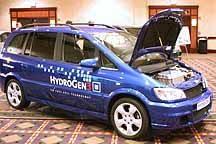 |
The 2001 GM HydroGen3 was a collaborative effort between General Motors and Opel. The Hydrogen3 was based upon the Opel Zafira MPV design. First unveiled at the IAA Motor Show in Frankfurt, Germany, the GM HydroGen3 minivan benefited from increased fuel cell performance including performance peaks over the HydroGen1 fuel cell vehicle. |
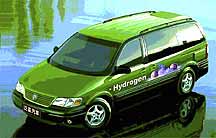 |
The 2001 Buick GL8 XEA1 or Phoenix was developed as a collaboration between GM and Shanghai Automotive Industry Corporation. The GM – Shanghai Phoenix is a hybrid vehicle that also uses a 35 kw fuel cell and compressed hydrogen gas for power. The GM Phoenix was unveiled at the Pan Asia Automotive Technology Center in China. |
 |
The 2001 Lada Niva (Lada VAZ-2131 Niva) is a 4wd Russian vehicle that was developed in collaboration with the Uralski Electrochemical Combine and the Rocket and Space Corporation. The Lada Niva contains an Antel VAZ-2131 fuel cell and used compressed hydrogen gas. |
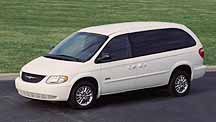 |
The 2001 DaimlerChrysler Natrium was based upon the Town & Country minivan. The DaimlerChrysler Natrium was unique for its time in that it didn’t use either compressed or gaseous hydrogen, but rather used sodium borohydride (NaBH4), a chemical compound which released hydrogen-on-demand, that then ran through a fuel cell to power the vehicle. The Natrium had a range of over 300 miles with a top speed of around 78 mph. |
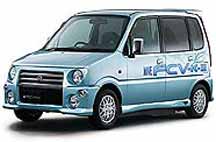 |
The 2001 Daihatsu Move FCV-K-2 was the first fuel cell prototype minicar approved for use on public roads by Japan’s Ministry of Land, Infrastructure and Transport. The Daihatsu Move FCV-K-2 was a hybrid vehicle developed jointly by Daihatsu and Toyota (who supplied the 30kw fuel cell stack) and ran on compressed hydrogen with a range of about 72 miles. |
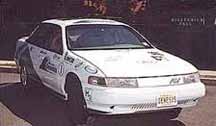 |
The 2001 New Jersey Genesis was built using a Mercury Sable donated by Ford and a Millennium Cell sodium borohydride (NaBH4) hydrogen generation system. The creation of the New Jersey Genesis was underwritten by the New Jersey Department of Transportation. In the New Jersey Genesis, hydrogen is created on demand by chemical reaction and run through a fuel cell for power. Civil engineer Mike Strizki was heavily involved in the project and still maintains the Genesis at his house, the first hydrogen-solar home in New Jersey. |
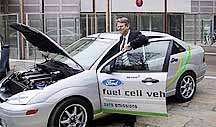 |
The 2001 Ford Think Focus FCV was a hybrid fuel cell vehicle that was a result between a collaboration of Ford and Think! The Ford Think Focus FCV used a Ballard 75kw fuel cell stack and 80kw NiMH battery pack. The Ford Think FCV is a bit docile by today’s standard achieving a top end speed of only 80 mph. |
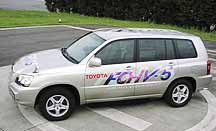 |
The 2001 Toyota FCHV-5 was unveiled in October of that year as the company’s first CHF (Clean Hydrogen Fuel) vehicle. CHF is a liquid fuel that can be derived from crude oil, coal or natural gas, has a clean sulfur content and can be dispensed from current gasoline pumps. The Toyota FCHV-5 is a hybrid SUV that carried on onboard CHF transformer to extract the hydrogen from the liquid fuel and run it through a fuel cell to power the vehicle. |
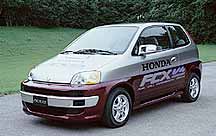 |
The 2001 Honda FCX-V4 one ups the FCX-V3 in power, range, maximum speed and acceleration. The Honda FCX-V4 is a four-seater that uses a Ballard 78kw fuel cell stack, 60kw electric motor and has a top range of 180 miles. The Honda FCX-V4 also includes improved safety features including crumple zones and cooling performance. |
 |
The 2001 Hydrogen Cobra was developed by the University of California, Riverside who modified a Carroll Shelby roadster to run on hydrogen gas. The Hydrogen Cobra was then taken to the salt flats to run in the October Bonneville World Finals. The purpose of running at Bonneville was to prove that hydrogen gas was not anymore dangerous that any other type of fuel. The Hydrogen Cobra turned in a respectable speed of 108.16 mph. |
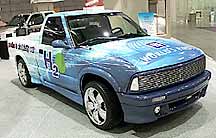 |
The 2001 Chevy S-10 Pickup Truck was the world’s first drivable vehicle capable of extracting hydrogen from gasoline and using the H2 gas to power the vehicle. The General Motors Chevy S-10 fuel cell vehicle used an onboard transformer to crack the hydrogen from the gasoline and send it through a 25 kw fuel cell stack, achieving 40 mpg in fuel economy. |
 |
The 2001 Ford P2000 is an internal combustion vehicle that runs on hydrogen (H2ICE). The Ford P2000 uses a modified Zetec 2.0-liter engine with 30-percent improvement in vehicle efficiency over its gasoline counterpart. While not as clean as a fuel cell vehicle, according to Ford it would take over 300 P2000 automobiles to emit the same CO2 as one gasoline-powered car. |
 |
The 2001 DaimlerChrysler Mercedes-Benz Sprinter van was a fuel cell vehicle built in collaboration with German company, Hermes Versand Service. The Mercedes-Benz Sprinter used a 75 kw PEM fuel cell coupled with a 55 kw electric motor with a range of 94 miles and top speed of 75 mph. |
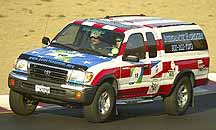 |
The 2001 Intergalatic Hydrogen H2TOY Tacoma used a modified ICE engine in a 1999 Toyota Tacoma 4X4 Truck and compressed hydrogen gas. Developed by Tai Robinson, the Intergalatic Hydrogen H2TOY Tacoma set a record in 2003 for coast to coast driving with hydrogen on the Drive to Survive exhibition spearheaded by Dennis Weaver. |
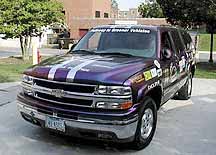 |
The 2001 Virginia Tech University ZEburban is a Chevy Suburban modified by faculty and students to compete in the 2001 Future Truck Competition. The Virginia Tech ZEburban used an 80 kw Honeywell PEM fuel cell donated by the U. S. Department of Energy for the competition. |
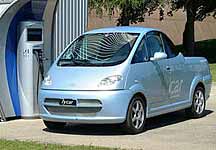 |
The 2001 ESORO HyCar was unveiled at the Fuel Cell Home Conference in Lucerne, Switzerland in July of that year. The ESORO HyCar is a hybrid uses a PEM fuel cell, 35 kw motor, 23 kWh NaNiCl and compressed hydrogen to power the vehicle. With a range of approximately 200 miles, the ESORO HyCar also has a top speed of 72 mph. |
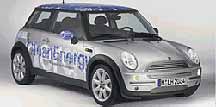 |
The 2001 BMW Mini Hydrogen car was first displayed at the Frankfurt Motor Show that same year. The BMW Mini Hydrogen is a bifuel vehicle (gasoline or liquid hydrogen) that uses an internal combustion (ICE) engine to power the vehicle. BMW produced the liquid hydrogen for the Mini Hydrogen vehicle by using solar power to show that this type of fuel can be produced by renewable methods. |
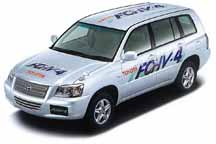 |
The Toyota FCHV-4 is a hybrid fuel cell vehicle based upon the design of the Highlander SUV. With a range of 155 miles and top speed of 95 mph, the Toyota FCHV-4 uses a Toyota built fuel cell stack, NiMH batteries and carries four compressed hydrogen storage tanks at 3,600 psi. |
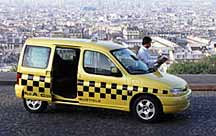 |
The 2001 Peugeot Fuel Cell Cab uses either sodium borohydride (NaBH4) to create hydrogen-on-demand to power the vehicle or compressed hydrogen gas. The Peugeot Fuel Cell Cab is a hybrid vehicle using primarily battery and electric power to propel the vehicle and using the onboard fuel cell to supply supplementary and auxiliary power as needed. |
 |
The 2001 BMW 745h is a dual fuel luxury automobile able to run off either gasoline or liquid hydrogen. The BMW 745h does however have a small PEM fuel cell that is separate from the ICE that powers auxiliary devices like air conditioning. Rated at 184 hp and with a top speed of 133 mph, the BMW 745h uses a 4.4-liter V8 and has a range of around 190 miles. |
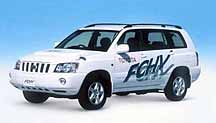 |
The 2001 Toyota FCHV-3 is based upon the Kluger V Highlander SUV and is a hybrid electric fuel cell vehicle. The Toyota FCHV-3 is powered by a 90 kw fuel cell stack and uses regenerative breaking to recharge the NiMH battery pack. Hydrogen is stored in metal hydride containers in the back of the vehicle. |
Navigation
1807-1986 1990-1998 1999 2000 2001 2002 2003 2004 2005
2006-2007 2008-2009 2010-2011 2012-2013 2014-2015 2016-2017
Written by Hydro Kevin Kantola